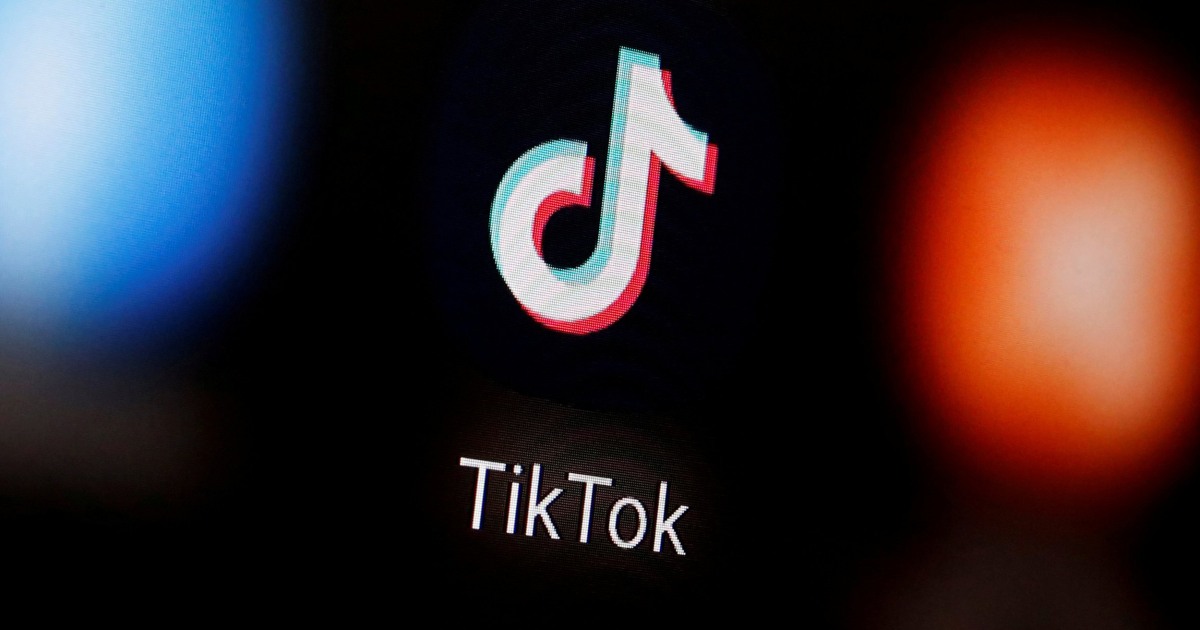A trans TikToker was the target of a conspiracy theory. Transphobia fueled the hate, experts say.

Sabrina Prater’s TikToks are like millions of others on the platform: They simply show her dancing in her home.
But one recent video — featuring her dancing to the song “Any Man of Mine” by Shania Twain — caught the attention of many on TikTok, eventually putting Prater, who is transgender, at the center of a conspiracy theory.
It began with some users inserting themselves into the video, adding seemingly harmless captions that were meant to be funny, such as “when you’re the last person to leave a party.”
But soon, others took their ridicule a step farther, calling Prater “Buffalo Bill” and accusing her of having “victims” in her home, without a shred of evidence. The conspiracy spread like wildfire, with hashtags about Prater racking up tens of millions of views on TikTok.
Experts say this type of conspiracy targeted at transgender people is not unexpected, and the internet gossip surrounding Prater likely stems from a history of media portraying transgender people as villains or dangerous people.
“This completely goes into the long history of media portrayals of trans people,” said Brennan Suen, senior strategist and LGBTQ program director at Media Matters for America, a liberal watchdog group that monitors conservative media. “When you ‘otherize’ them, villainize them and portray them as criminals, it does get ingrained in the culture.”
In an examination of 102 episodes and nonrecurring storylines of scripted television, LGBTQ media advocacy group GLAAD found that transgender characters were cast as killers or villains in at least 21 percent of the episodes and storylines.
“This is an interesting case study of how myths that came up so long ago in our culture and media have just persisted for this long,” Suen said of Prater’s treatment.
Online rhetoric similar to Prater’s case can have offline ramifications, especially for members of the transgender community, some experts say.
“Sabrina is more likely to be in danger as a trans woman or as a gender-nonconforming person than she is to be the danger,” said Lois, a TikTok user who asked that NBC News only identify her by her first name out of fears for her safety.
Lois, 24, is among the handful of TikTok users who came to Prater’s defense. In one of her videos, she debunked each theory or piece of “evidence” about Prater.
“The accusations went from ‘This is a person who is clearly in a bad situation,’ and it started going into ‘This is a serial killer,’” Lois said.
People who live near Prater have claimed they would seek her out and post videos of her online, Lois said. Others have doxxed Prater, sharing her address and images of her home.
This sort of real-world confrontation can have dangerous, sometimes fatal consequences. In 2020, a record 44 transgender people were killed in the United States, according to the Human Rights Campaign.
2021 is on track to be even more deadly for transgender and gender-nonconforming people. As the year draws to a close, at least 49 transgender or gender-nonconforming people have been killed, according to the HRC.
“LGBTQ people face higher rates of online hate and harassment than any other marginalized community group, and much of that is directed towards transgender, nonbinary and gender-nonconforming people,” said Mary Emily O’Hara, rapid response manager at GLAAD. O’Hara was formerly a reporter for NBC News.
A 2019 study by anti-bullying organization Ditch the Label re-emphasized the degree to which transgender people face harassment online. Ditch the Label and its analytics partner, Brandwatch, found that of the 10 million transgender-related comments on social media platforms over a 3 1/2-year period starting in 2016, 1.5 million (or 15 percent) were found to be transphobic.
O’Hara, who uses they/them pronouns, said biases against transgender people can lead to “increased rates of poverty and homelessness, something no person should be mocked for experiencing.”
They added that the algorithms of many social media platforms lack the ability to protect marginalized groups and that misinformation about transgender and nonbinary people is able to rapidly spread with what seems like little recourse for the person being targeted.
Even some who made videos defending Prater were targeted with anger. Lois said people commented on one of her videos telling her she is “complicit” and “letting [Prater] get away with” the imagined murders.
Another facet as to why the conspiracies around Prater took off is TikTok’s infatuation with true crime.
The recent “Couch Guy” saga — in which TikTok obsessed over a video of a couple in an attempt to determine whether or not the boyfriend was cheating on the girlfriend — is another example of TikTok citizen sleuths letting their imaginations run wild with real consequences for those at the heart of the situation. But the conspiracy around Prater has the potential to cause significantly more harm for the subject.
“I don’t think we can separate out what’s happening on TikTok from what’s happening in larger media culture, which is this sort of fetishization of true crime,” said Brooke Erin Duffy, an associate professor of communication at Cornell University.
Eventually, the videos made about Prater became overwhelming, and she posted a TikTok of herself addressing the conspiracy theories.
In a livestream, which is no longer available but has been reposted by other users, Prater said she’s “not a serial killer” and said she’s working to fix up her home. In another video that has since been deleted, Prater said TikTok had flagged her content as violating community guidelines.
“I didn’t do nothing wrong. I’m sick of being hurt by this. I’m just like anybody else. I want to be loved and accepted, man. And I’m not,” Prater said through tears in the video. “I’m getting treated worse than anybody coming out like me.”
Prater did not respond to a request for comment from NBC News.
As videos like the one of Prater crying gained attention and the misinformation reached a fever pitch, those who had made the conspiracy theory videos began to apologize and delete the content they’d made.
One creator, who made six different videos about the Prater conspiracy, deleted posts with accusations against her and posted a TikTok apologizing to Prater for any harm they caused.
“It almost feels like screaming into the void sometimes,” Lois said. “This is not your true crime fiction novel. This is a real person who is probably struggling with something and probably needs your compassion and help.”


